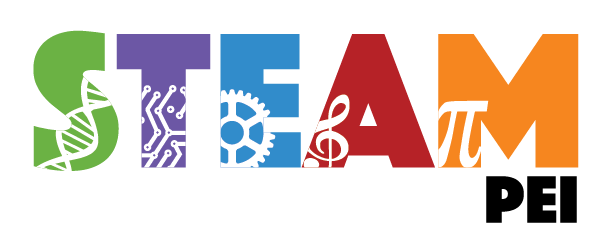
All of WordPress as a .NET Standard assembly, without PHP.



Chat with the community on Gitter if you need help:
How to add WordPress into your ASP.NET Core app
Use WordPress as ASP.NET Core Middleware.
Add a package reference toPeachpied.WordPress.AspNetCore (Pre-Release)
Add WordPress as middleware within your Configure startup method:
public class Startup { public void Configure(IApplicationBuilder app) { // ... app.UseWordPress(); // ... } }
Configuration
appsettings.json
WordPress on .NET can be configured using the standard appsettings.json, you are no longer editing the wp-config.php source file.
{ "WordPress": { "dbhost": "localhost", "dbpassword": "password", "dbuser": "root", "dbname": "wordpress", "dbTablePrefix": "wp_", "siteUrl": "", "homeUrl": "", "SALT": { "AUTH_KEY": "r(EoMbKEvlg)", "AUTH_SALT": "q0#AzvJ*[4~B", "LOGGED_IN_KEY": "!AAienFSridC", "LOGGED_IN_SALT": "C=(4(8WPMeRu", "NONCE_KEY": "Z[e37@=y)m.C", "NONCE_SALT": ";v7Wv/BV)Pz{", "SECURE_AUTH_KEY": "pc}_Pv52,m=j", "SECURE_AUTH_SALT": "#n]+o^w/%-~M" }, "constants": { } } }
To generate your unique set of SALT, feel free to use Daniel Llewellyn's tool on https://wpdotnet-salts.azurewebsites.net/.
Note: WordPress expects the MySql database to be running, with the database dbname (wordpress by default) already created. Any of the configuration values can be omitted to use the default value.
ConfigureServices method
The service can be configured using AddWordPress configuration method. First argument is a callback providing options to be modified.
public class Startup { public void ConfigureServices(IServiceCollection services) { services.AddWordPress(options => { options.DbHost = "localhost"; options.DbName = "wordpress"; // ... }); } }
The options object is already initialized with default values and with appsettings.json configuration.
Running this repo from the sources:
Start mysql, atlocalhost:3306, user root, password password, created database wordpress
cmd: dotnet run -p app
vs: open solution and start app project
vscode: open folder and hit F5
WordPress on .NET SDK
The solution provides all of WordPress as a .NET standard assembly. Consisting of following projects:
app is a demo project that runs WordPress as a part of ASP.NET Core application. PeachPied.WordPress contains the sources of WordPress that are compiled into a single .NET standard assembly (PeachPied.WordPress.dll). Together with its content files it is packed into a NuGet package PeachPied.WordPress. The project contains additional files:
wp-dummy.php declaring dummy classes required but not used by most plugins to be compiled successfully.
PeachPied.WordPress.DotNetBridge is a "must-use" plugin exposing the WordPress API to .NET.
PeachPied.WordPress.Standard defines an abstraction layer providing predefined PHP constants, and .NET interfaces that get implemented and called by the DotNetBridge plugin.
PeachPied.WordPress.AspNetCore is an ASP.NET Core request handler that configures the ASP.NET pipeline to pass requests to compiled WordPress scripts. The configuration includes response caching, short URL mapping, various .NET enhancements and the settings of the WordPress database.
This project contains the complete source code of WordPress with the additional "must use" WordPress plugin that exposes the PHP API to .NET. The purpose is for this code to be compiled by PeachPie, resulting in the output running purely on Microsoft .NET Core.
Therefore, if everything works as it should, you will see the standard unchanged WordPress in the same way as you would in the traditional PHP version. The difference is that the compiled website runs on .NET Core in the background. Also this approach allows to take advantage of ASP.NET Core request handling and makes it possible to extend WordPress with C# (i.e. plugins, themes, etc.).
Possible Use Cases
Improve performance: compiled code is fast and also optimized by the .NET 'JITter' for your actual system. Additionally, the .NET performance profiler may be used to resolve bottlenecks. Write plugins in C#: plugin functionality can be implemented in a separate C# project and/or PHP plugins may use .NET libraries. Utilize .NET with all its advantages like sourceless distribution or type safe and compiled code, which is further optimized and checked for the actual platform. Integrate WP into a .NET application: drive the WordPress life cycle from a C# app, run within the Kestrel Web Server. Sourceless distribution: after the compilation, most of the source files are not needed. Some files contain meta-data (like plugins and themes) and should be kept in the output. Take advantage of the .NET runtime: JITted, secure and manageable platform.Prerequisites
.NET Core 3.1 or newer MySQL server Optionally - Visual Studio 2017 or Visual Studio Code using the official Peachpie for VSCode extension available on the Marketplace
版权声明:
1、该文章(资料)来源于互联网公开信息,我方只是对该内容做点评,所分享的下载地址为原作者公开地址。2、网站不提供资料下载,如需下载请到原作者页面进行下载。
3、本站所有内容均由合作方或网友上传,本站不对文档的完整性、权威性及其观点立场正确性做任何保证或承诺!文档内容仅供研究参考学习用!
4、如文档内容存在违规,或者侵犯商业秘密、侵犯著作权等,请点击“违规举报”。




